Scaler: Noise, bass, and the machines that hold it together
Scaler are not a band content to sit neatly in a genre. Born from a shared background in metal and guitar music, they’ve evolved into something far harder to pin down: a live act where riffs and drums collide with synths, samplers, and club structures. Their sound is heavy but fluid, noisy yet precise, always shifting between the raw power of a rock show and the seamless flow of electronic performance.
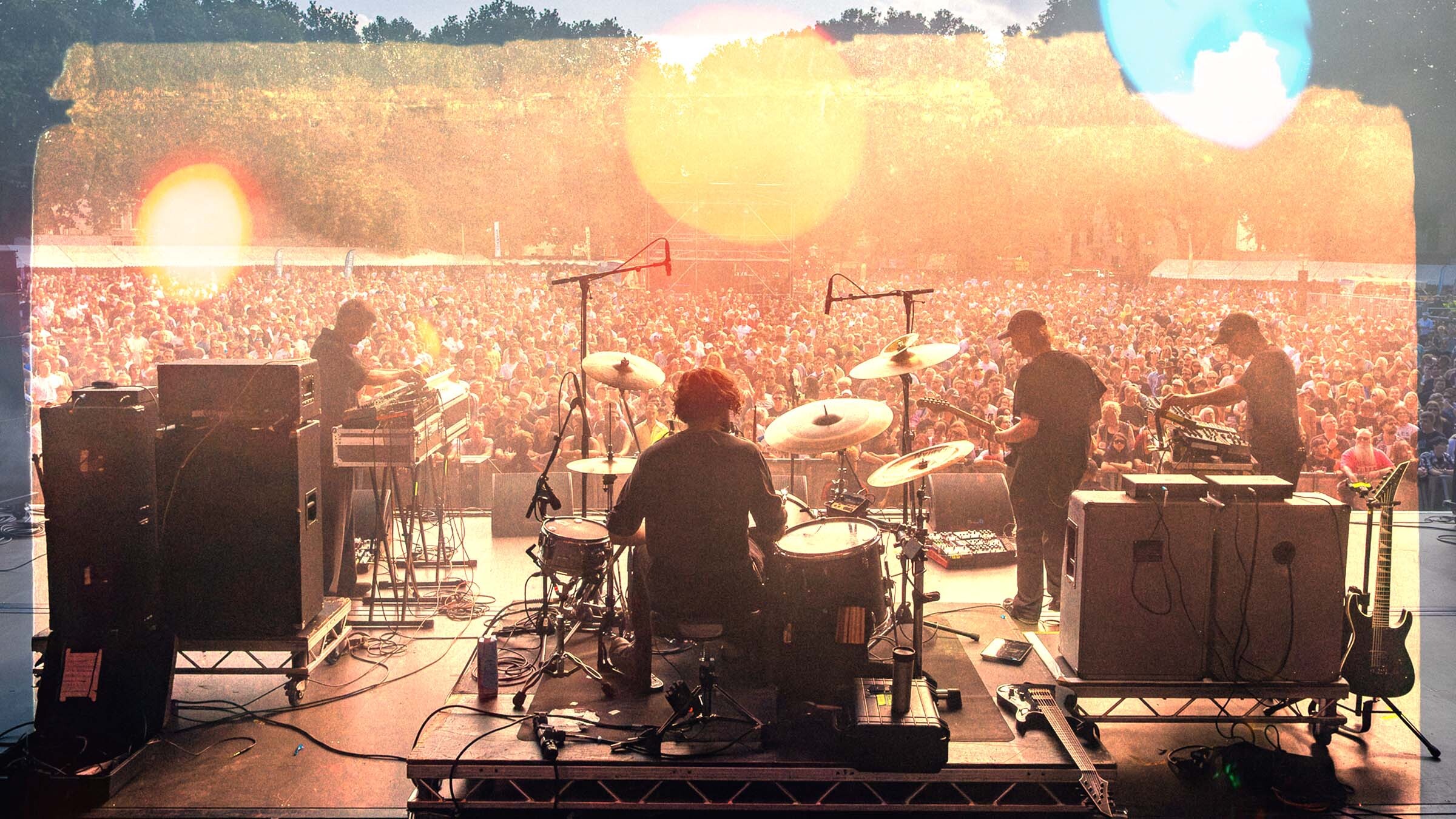
Their restless energy comes from years spent immersed in the UK underground. Arriving in Bristol, the band found themselves in a scene where community labels and DIY spaces throw noise, techno, and trip hop on the same bill, and thrive. This culture’s encouraged them to dissolve boundaries: guitars playing synth parts live, drums locked to sequencers, and synths run through guitar amps for grit.
For Scaler, the studio and stage are never separate worlds. They write tracks with live reinvention in mind, and gigs unfold like a DJ set: continuous, intense, and without pause for breath. That commitment to momentum demands tools with the flexibility of a rock band and the precision of a producer’s studio. Novation gear has become central to their balancing act.
Scaler have relied on Novation Peak and Launch Control XL throughout their live shows. Just before releasing their latest album, Endlessly, we joined Alex (synths and production), Nick (guitar), Isaac (drums), and James (bass and synths) supporting IDLES at their hometown Block Party, an unusual daylight show for Scaler, who usually play late-night venues with custom visuals designed by Jason Baker. Later on, we chatted with Alex and Nick to talk through the rig they’ve built and how Novation gear shapes both their studio work and live performances.
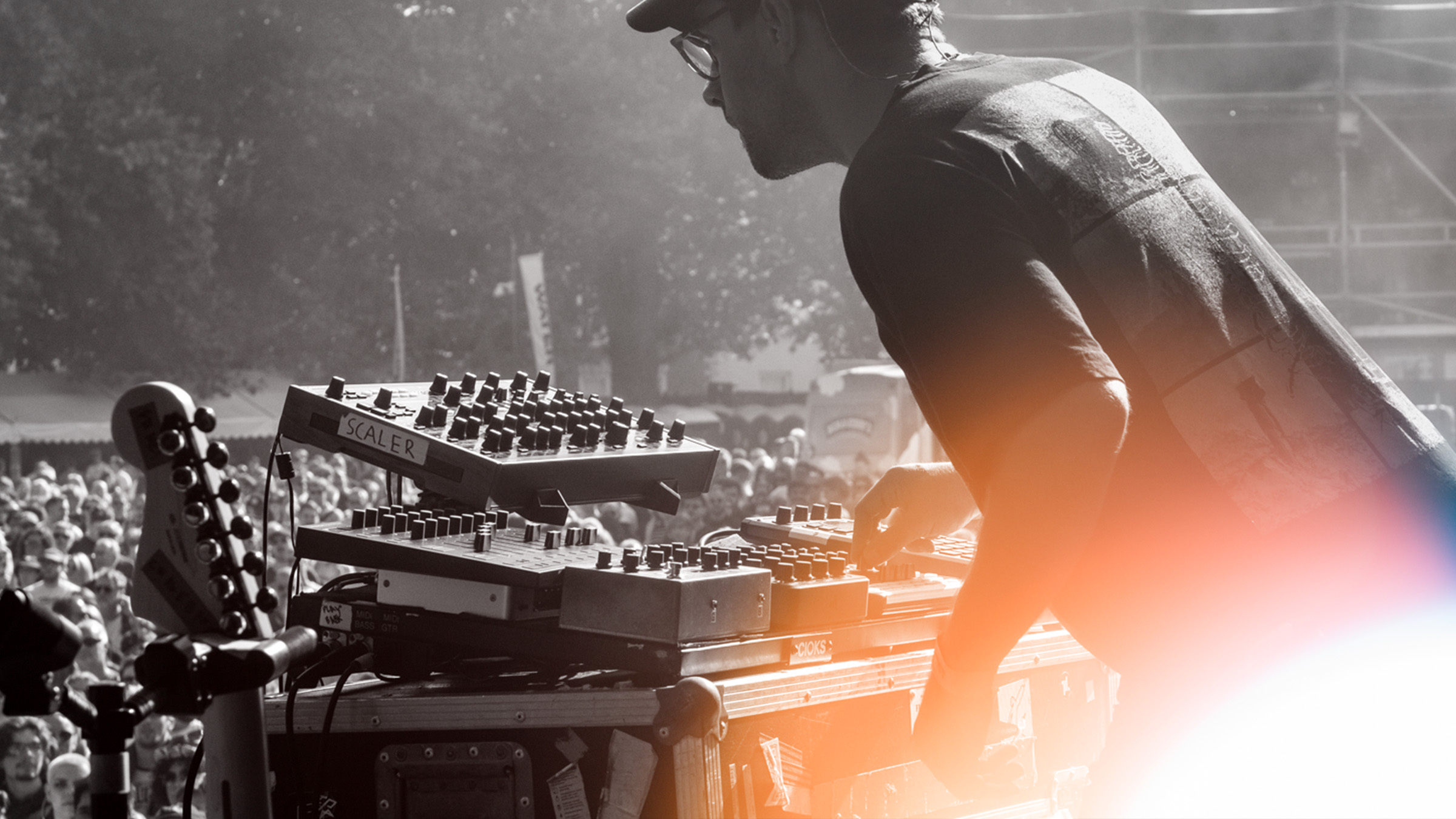
From metal to bass culture
When asked to describe their sound, Scaler hesitate. In their early days, “industrial techno played by a metal band” seemed accurate enough. But the new album stretches further: shoegaze textures, flashes of hip hop, echoes of trip hop, even shards of pop. Genres are less important than the community and share an appreciation of genres and art forms, working together to create events and experiences.
Moving to the city in the mid-2010s, the band stumbled across nights run by labels like Howling Owl, where noise rock, live techno, and experimental poetry clashed on a single lineup. Witnessing artists like Giant Swan, Silver Waves, and Young Echo side by side shifted their sense of what heavy music could mean. Massive Attack and Portishead, once filed away as “dad bands”, suddenly snapped into focus as the result of underground bass culture rising into the mainstream.
That philosophy has roots in their earliest experiments. Before Scaler, members cut their teeth in indie and rock projects, dabbling with electronics on the side. The Novation Launchpad S and Launchkey Mini MK1 became their way into Ableton, launching clips and sketching beats alongside guitars. They repurposed a Boss looper pedal as a makeshift sampler, forcing them to “stepladder” patches just to keep playback running. Eventually, they added standalone samplers and grooveboxes, whose tactility gave them the live feel they were chasing.
Those experiments were messy but formative. They showed the band it was possible to perform with machines as unpredictable instruments.
The studio: Making electronics feel physical
Having written and recorded their first album separated by the pandemic, this time around Scaler resisted the temptation to stay in the box. While Ableton anchors their workflow, on their latest release, almost every sound eventually leaves the computer and comes back through a physical space.
Novation’s Peak plays a starring role, producing synth sounds in the studio. It’s less about carefully programming a patch and more about what happens when things go wrong in interesting ways. The band often send a sequence into the synth, start cycling through presets, or twist knobs before they even know what they’re aiming for. Looking for a simple pad can suddenly turn into something far more exciting, a texture they’d never have thought to design but one that fits perfectly.
Those “happy accidents” don’t happen in the same way with plugins. Hardware forces unpredictability, and for Scaler that’s essential. Even if the part on record wasn’t originally written on Peak, it can be reinterpreted through it for live shows, giving them a sound that’s close enough to the album but with rougher, more volatile edges. Much like a guitarist playing through the same amp night after night, Peak becomes a consistent voice across the set, while still leaving room for chaos.
That willingness to get lost is what sets hardware apart from plugins. Where software encourages precision, Peak invites mistakes, and those mistakes often sound better. On the album, its fingerprints are everywhere: pads re-amped into brick-walled basements, leads mangled into distortion, subtle filter moves that shift a track’s emotional centre.
They explained that they found their mixes often sounded separated, with the digital parts not quite melding with the drum and guitar parts. Phase two of the new album’s production was making sure their synths sounded like they were made in the same space. To achieve this, they used techniques like reamping the synth parts and drums, blasting them through the PA speakers at local venue, The Louisiana, then later in the basement of a disused manor. They routed the synths and drums through some old guitar practice amps, used both close and ambient mics to shape the sound. The aim was simple: to make the electronic elements sit in the same world as the live instrumentation.
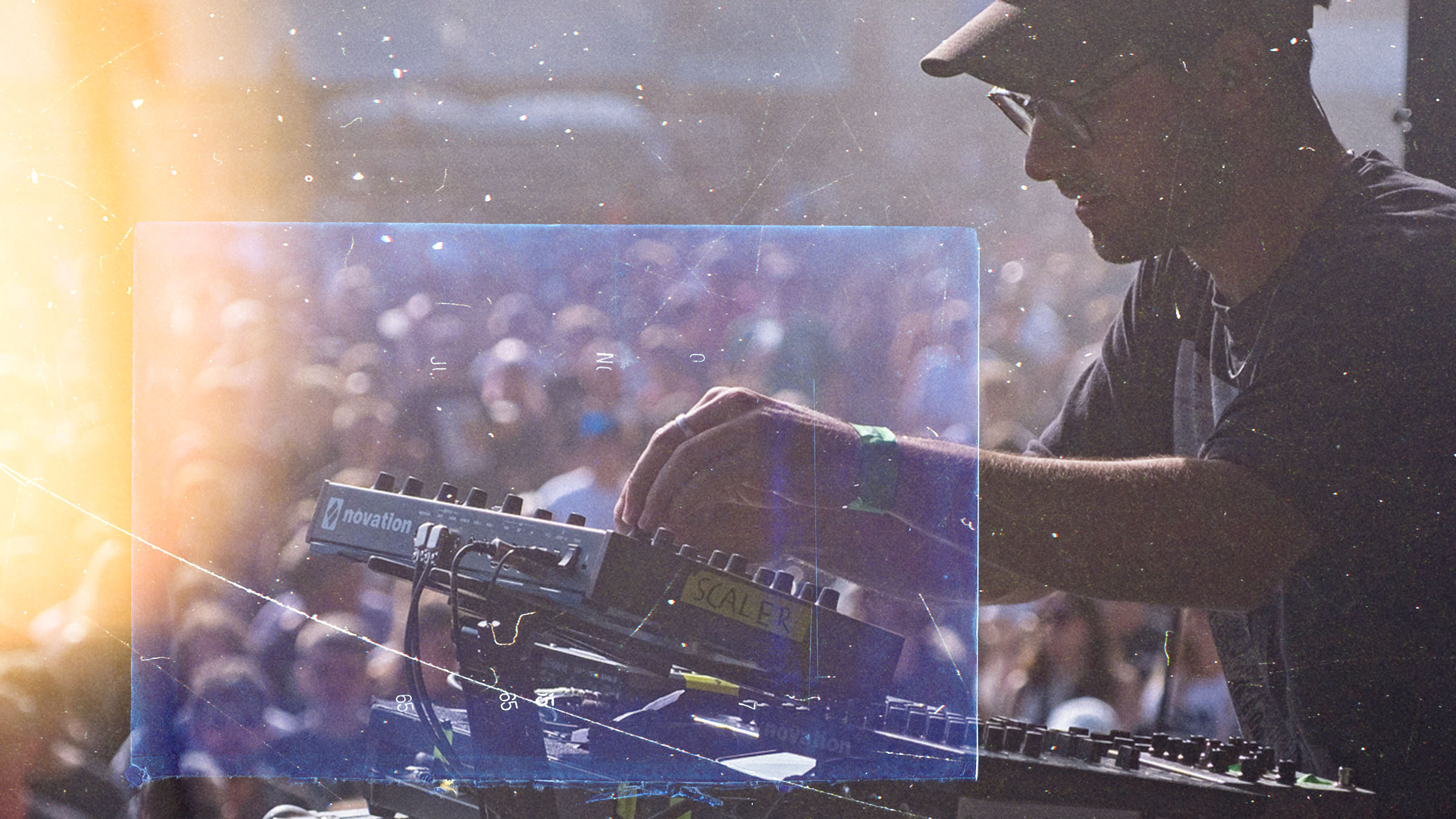
The live rig: Flow without breaks
Scaler’s philosophy for live shows is clear: no gaps. From their first gig, they decided sets would run as a single, unbroken performance, closer to a DJ mix than a rock concert. That demands a rig capable of seamless transitions and live control.
Ableton runs the backbone, but Launch Control XL is the hands-on hub. They group stems from their album tracks onto its faders, giving immediate control over levels, and dynamics. The pots and encoders map to their send effects like delays and reverbs to help the transition between sections and tracks live. With its ability to be mapped to anything, they can turn almost anything from the stems into a performance using Launch Control XLs Custom Modes and custom mapping.
Redundancy is a key part of Scaler’s ability to rely on electronic instruments and laptops live, creating a stress-free and therefore creative environment. They build this in everywhere, but at its core is two laptops running the same Ableton session with an iConnectivity Ethernet MIDI interface and Launch Control XL mapped to both Ableton sessions. One press of a button starts both Ableton Sets, ensuring if one machine crashes, the show never stops.
Live, Peak takes on lead synth duties in almost every track. Even when a part wasn’t originally written on it, Peak is versatile enough to capture the character of the record while offering space to reimagine it on stage. Sequenced from Ableton, it becomes a hands-on instrument: with Alex adjusting the filters, envelopes, distortion, and effects in real time, turning fixed sequences into evolving performances that can ebb and flow with the room.
That element of variation is important. Peak doesn’t always respond in exactly the same way twice, which makes it feel more like an instrument than a backing track. For Scaler, that means their electronic layers carry the same energy and immediacy as their guitars and drums.
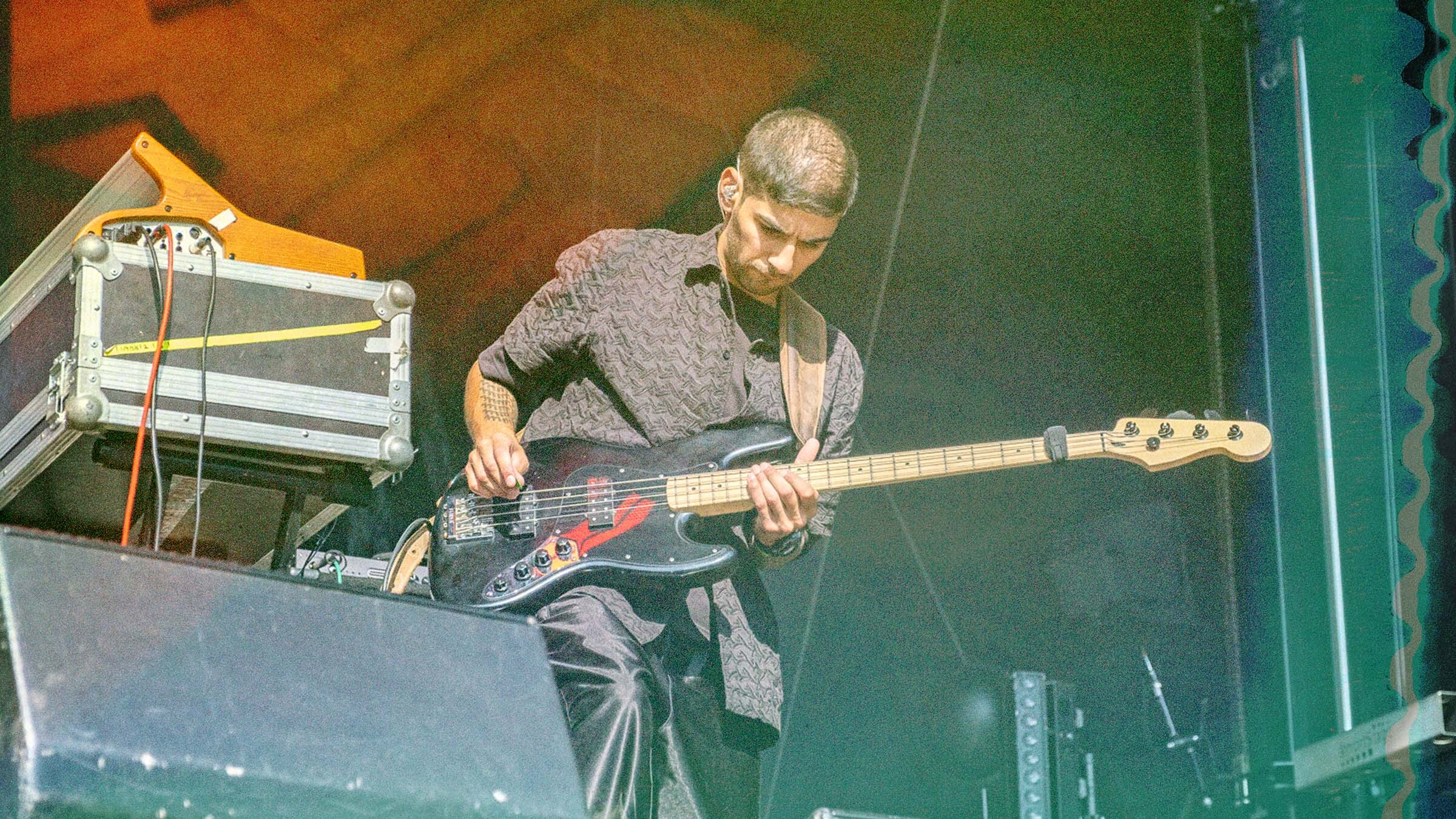
Other touches reveal how far they’ve pushed their rig from just a live band to an amalgamation of genres and gear. Isaac’s acoustic kick drum simultaneously sends a MIDI trigger to an 808 sample in Ableton, sidechains Nick’s guitar rig, and ducks James’ bass through the sidechain input on the OTO BOUM pedal. DIY gear from Bristol makers like Orgeldream adds noisy chaos, while an array of pedals and samplers blur the edges further.
The result is a band that looks and feels like a live act but moves with the continuity of a DJ. One track dissolves into the next, guitars morph into synth textures, and drums lock into sequencers without ever letting the energy drop.
Writing with community in mind
If their debut was an isolated project pieced together during lockdowns, the new record is its opposite: communal, collaborative, made in rooms with friends and guest vocalists. Some tracks were written with specific singers in mind, built almost as invitations to collaborate. Others evolved through jamming and editing, often scrapping layers until only the essential remained.
That collaborative ethos mirrors the Bristol scene they came up in. Community labels, basements, and DIY spaces shaped their idea of how music should be made and shared. On the album, that openness results in more variety: heavier tracks are heavier, poppier tracks are poppier, and guest vocals pull the music into unexpected directions.
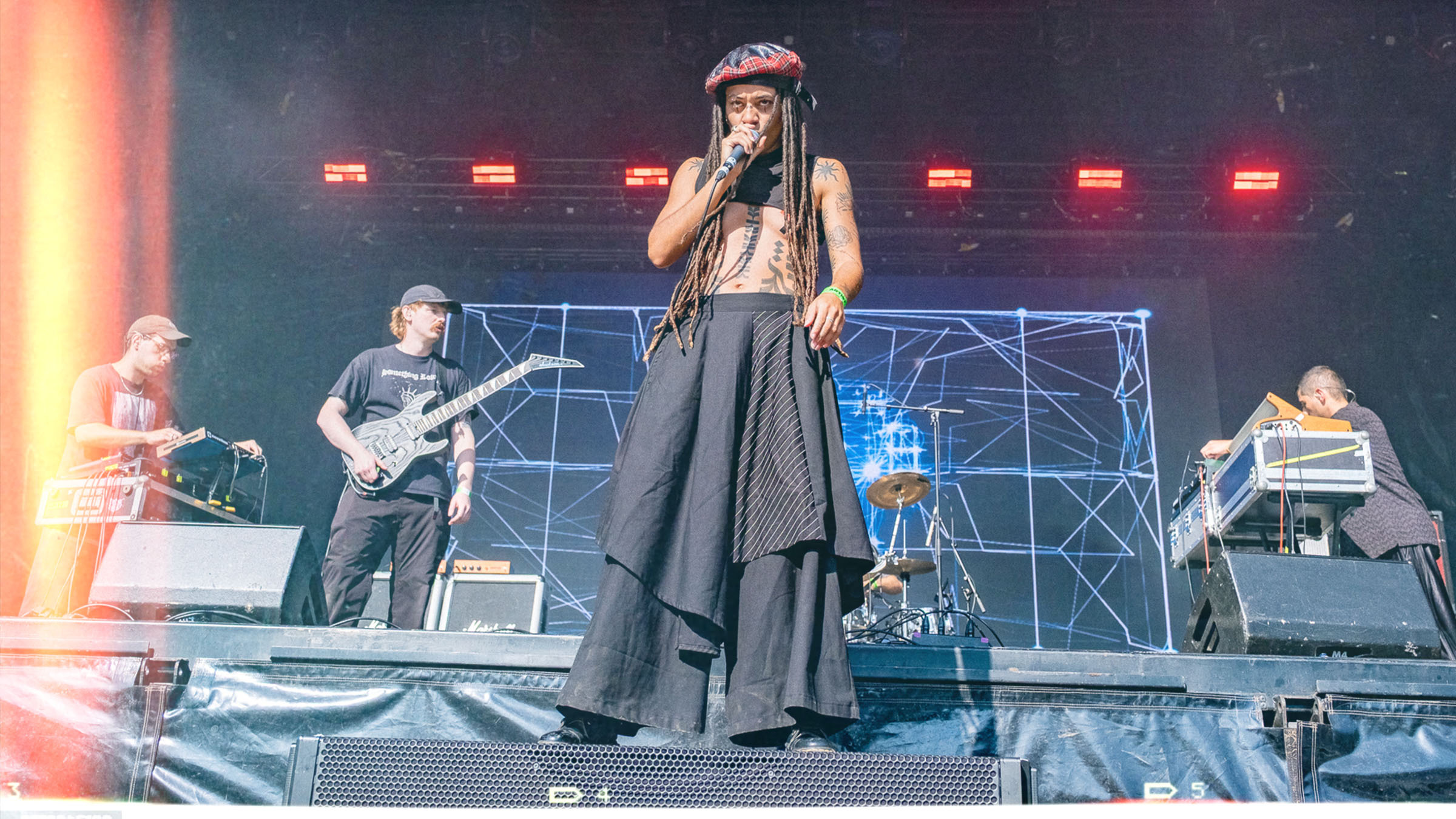
How Scaler will take the new album to the stage later this year remains undefined. With a stack of guest vocalists, they know straight re-creations aren’t possible or could be uninteresting. Instead, they hinted at a different approach: vocal fragments cut into live edits, songs reborn as harder club versions, or the record melted into a continuous megamix. They mention references to Nine Inch Nails and Working Men’s Club, but the details stay hazy. It seems like another exciting challenge for the band: a live show that won’t just replay the album, but transform it into something else, an experience where riffs, beats, and voices blur until the line between band and DJ disappears.
Why Novation?
Scaler’s use of Novation didn’t begin with Peak or Launch Control XL. Long before this band, Nick and Alex were already experimenting in their old projects. The Launchpad S and Launchkey Mini [MK1] were the gateway compact controllers that let them launch clips in Ableton, sketch ideas, and start fusing electronics with guitars.
That early trust carried forward. Today, Novation hardware is more than a utility, it’s what makes their hybrid approach possible. The Launch Control XL keeps Ableton performances playable and reactive, turning playback into something they can shape on the fly. Peak covers an enormous sonic range without ever losing character, from growling bass drones to glassy pads. Together, they bridge the gap between structured electronic playback and the messier, riskier world of live rock instrumentation.
Ask the band which one they’d bring to a gig if forced to choose, and the answer splits. Without Launch Control XL, the show literally wouldn’t start, it’s mapped to the play button, the anchor point, and the device that controls two laptops. But without Peak, they’d lose their sonic centre, the versatile voice that lets their set breathe and shift in real time.
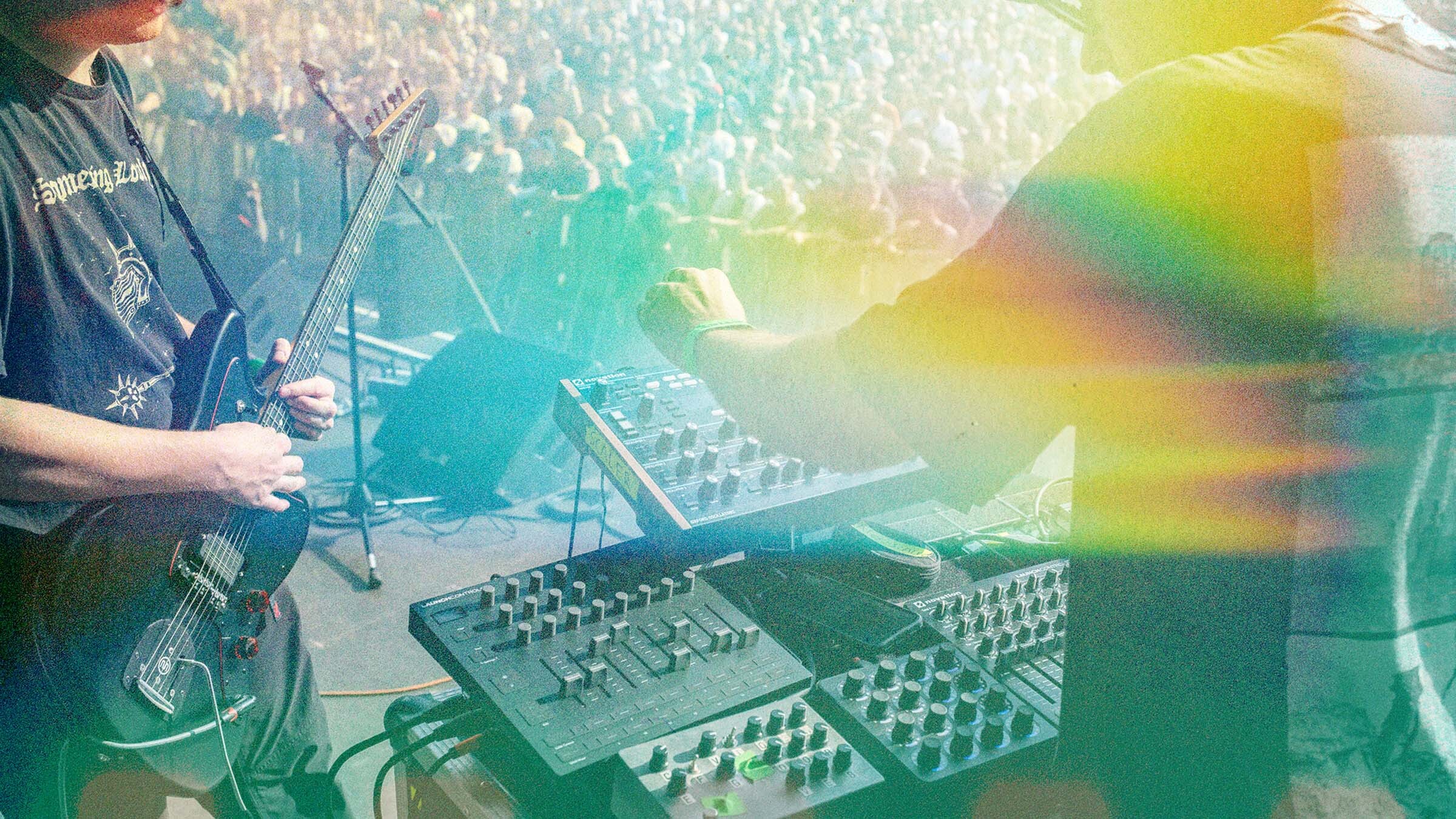
For Scaler, Novation gear has been there from the first experiments with Ableton through to today’s fully formed hybrid live shows. It’s not just hardware, it’s been part of the band’s evolution, shaping how they moved from being guitar kids in rock bands to a live act blurring the lines between club culture and heavy music.
Lessons for other artists
For musicians wanting to fuse guitars, drums, and synths, Scaler’s advice is simple:
- Start small. A flexible synth and a hands-on controller can cover huge ground.
- Treat gear as instruments. Avoid relying solely on playback; map controllers creatively and leave room for accidents.
- Minimise points of failure. To convert your tracks to live, redundancy, reduced cabling, and solid mappings keep shows from falling apart.
- Think like DJs, play like a band. Continuous flow transforms a set into an experience rather than a sequence of songs.
What’s next?
Scaler’s rig is constantly evolving. More hardware sequenced live, fewer fixed stems, and maybe a shift into Ableton’s Session View, they hinted at using a Launchpad for launching clips or samples. But the principle won’t change: a rock band using electronic gear to move like a DJ, blurring the lines between dance floor and stage.
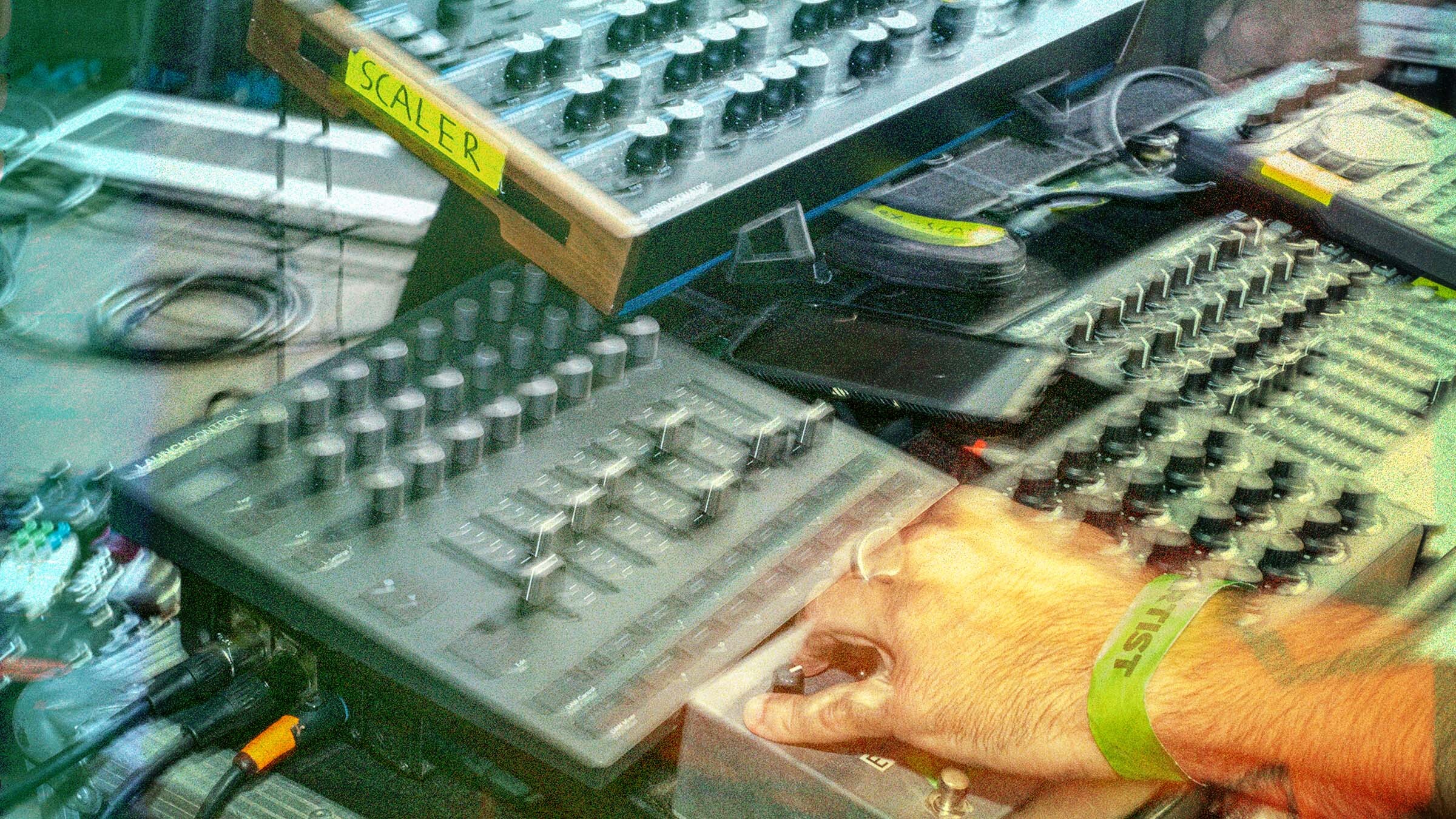
Scaler’s new album Endlessly is out on September 26th
Scaler are also heading on a tour across November and December, including dates in the UK and mainland-Europe. Find out more and get updates via their website and social media here:
- YouTube
Words by Ed Fry
Photography by Ed Fry & Emma Davies
